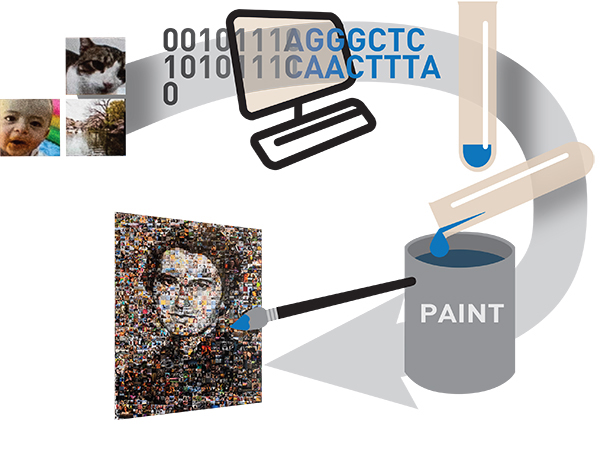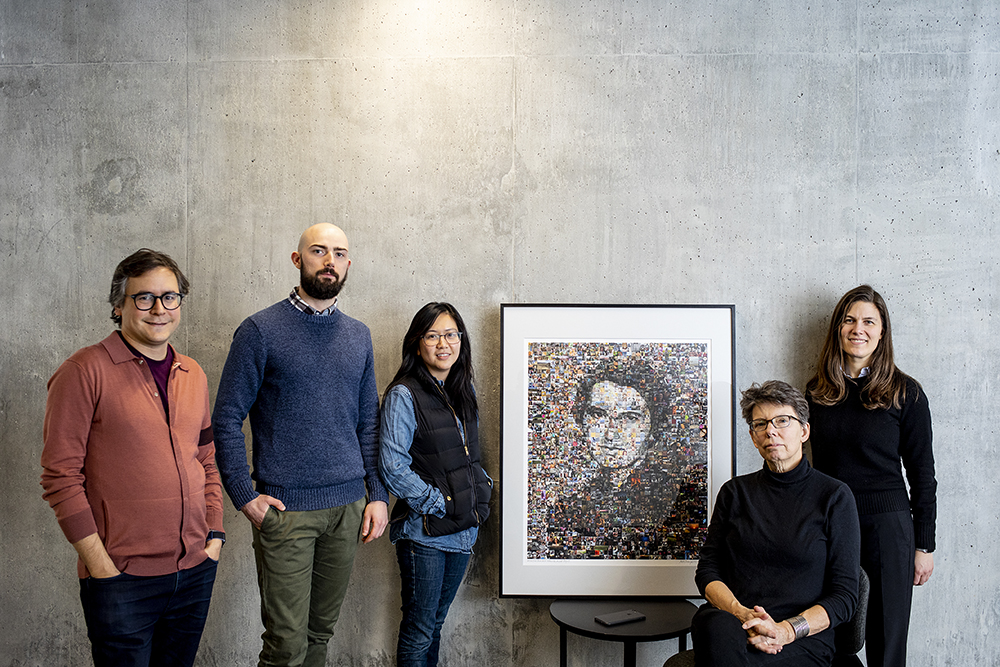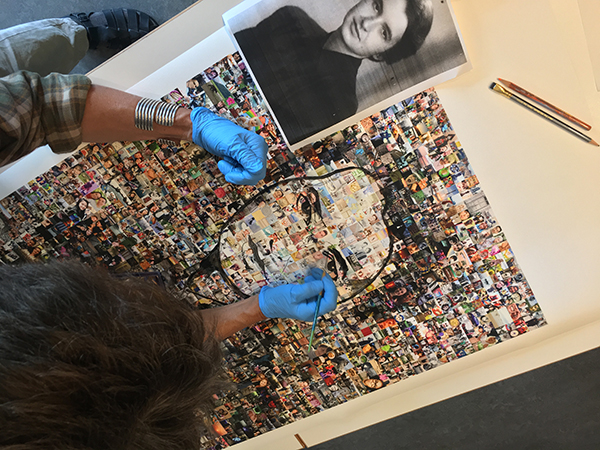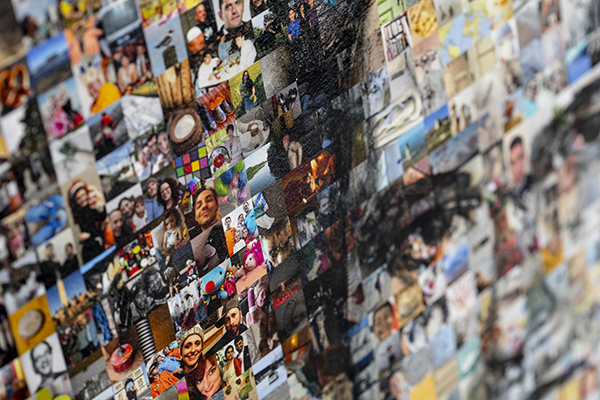British scientist Rosalind Franklin, who spent the early 1950s researching the structure of DNA at King’s College London, should have won the Nobel Prize. She very well may have, except that her untimely death from ovarian cancer at the age of 37 meant that the Nobel Committee, which does not award posthumously, did not even consider her. For it was Franklin, not the famous scientific duo Watson and Crick, who captured the first image proving the shape of deoxyribonucleic acid — better known as DNA, the building block of all life.
At the time, Franklin was applying her expertise in x-ray crystallography to determine the structure of DNA in collaboration with King’s College Ph.D. student Raymond Gosling. The researchers captured an image of moistened DNA fibers using x-ray diffraction techniques and equipment refined by Franklin herself. The so-called Photo 51, which revealed a helical shape consisting of two strands, and other unpublished data from Franklin’s lab would find their way into the hands of fellow scientists James Watson and Francis Crick at Franklin’s alma mater, the University of Cambridge. The material confirmed the three-dimensional structure of DNA as a double helix — a structure the pair would race to describe in a paper published in April 1953 in the journal Nature.
Although Franklin would publish her own paper co-authored with Gosling on the double helix in the same issue, it was Watson and Crick, along with Franklin’s King’s College colleague Maurice Wilkins, who went on to share the 1962 Nobel Prize in Physiology or Medicine and thus ensure their places in the pantheon of scientific achievement. The contributions of Franklin, who had passed away 4 years before the Nobel announcement, would only begin to be more widely appreciated decades later. In any event, the Nobel Prize can only be shared by up to 3 individuals, so we will never know whether Franklin, had she lived long enough, would have received her due. Given the limitation on sharing the prize and the attitudes toward women in science at that time — and her own colleagues’ attitudes toward Franklin, in particular — it seems unlikely.
More than 60 years after Watson and Crick laid eyes on Photo 51, Allen School professor Luis Ceze met Seattle-based multimedia artist Kate Thompson in a bar not far from the University of Washington campus. Ceze co-directs the Molecular Information Systems Laboratory, a partnership between UW and Microsoft that is exploring synthetic DNA’s potential as a long-term storage solution and computational platform for digital data. He had already crossed paths with Thompson on campus, where she was doing an artist’s residency in the Nemhauser Lab focused on evolutionary biology. Ceze was intrigued by what she told him about her work, which is focused on making science visual.
For more than a year, he and his colleagues had been collecting images submitted by people around the world as part of the #MemoriesInDNA project under the tagline “What do you want to remember forever?” After meeting Thompson, Ceze became interested in exploring a way to ensure that the world would remember Franklin and her contributions forever — and he had a particularly fitting medium in mind.
“Rosalind Franklin was largely responsible for uncovering the structure of DNA, nature’s own perfected storage medium. Her work opened up a whole new avenue of scientific research and discovery for which, to this day, she does not really get the credit that she deserves,” Ceze said. “We had this massive collection of image files signifying what people want to preserve for posterity, and this new storage method. So we thought, why not use them to demonstrate the science we’ve been working on while paying tribute to the scientist who started it all?”
The idea he and Thompson hashed out over glasses of wine was elegantly simple. The lab would work with Thompson to create a piece of art to commemorate Franklin that incorporates the very medium that she revealed to Watson, Crick, and the world: DNA. To be precise, the medium would be synthetic DNA containing thousands of copies of images people had voluntarily contributed to advance a new wave of molecular systems research.
“I was fascinated by the idea of honoring this brilliant but mostly forgotten woman using the same material that should have made her famous in her own lifetime,” said Thompson, who took on the role of artist-in-residence at MISL after meeting with Ceze. “Until recently, her legacy to science and the world went largely unnoticed. I hope this project helps to ensure it will not be ignored.”
The result of Thompson’s collaboration with the MISL is now on display in the Bill & Melinda Gates Center for Computer Science & Engineering on the UW Seattle campus. The work, which measures 40 inches high by 30 inches wide and was created using acrylic ink on archival paper, took nearly 8 months from conception to completion. It is one of three original copies Thompson produced at the behest of the lab.
Viewed at a distance, the work is clearly a portrait of Franklin. Thompson reproduced her likeness from an old black and white photograph, combining soft, dark brush strokes with a mosaic of nearly 2,000 meticulously arranged images — the majority of which measure just ⅞ inch square — from the #MemoriesInDNA collection. The artist arranged the latter with the help of a macro she wrote for the purpose, which sifted through the images and sorted them by tonal values.
The images that make up Franklin’s face are contained within a larger collection that serves as a colorful backdrop for the subject of the painting. Up close, the images themselves come into sharper relief; if they linger long enough, viewers can make out the contents of the individual photos in detail. Each image depicts a person, place or object someone wants remembered in perpetuity.
But Thompson didn’t just paint on the images; she painted with them, infusing Franklin’s likeness with the actual data files ensconced in their microscopic storage medium. Using roughly half of the trove of more than 10,000 photos submitted as part of #MemoriesInDNA, MISL researchers first converted the digital image files — around 325 megabytes of data — into the As, Ts, Cs and Gs of DNA and encoded them into synthetic DNA ordered from Twist Bioscience. Thompson then took the vial of DNA furnished by the lab, which consisted of a mere 1.5 milliliters of liquid, and mixed the contents with black acrylic ink along with a binding substance that would help it adhere to the paper. She combined yet more of the image-laden DNA with a clear acrylic hardener, which she used to coat the finished piece.
“I painted several practice portraits using plain ink first,” the artist recalled with a laugh. “I didn’t want to mess up when it came time to use the real thing. Ink is relatively inexpensive but specially encoded DNA from a lab, not so much!”

Before Thompson could pick up her brush, lab members David Ward, Bichlien Nguyen, Xiaomeng Liu, and Jeff Nivala conducted experiments to ensure that, in the latter’s words, “the science was as rigorous as the art.” First and foremost, they needed to establish that no chemical reaction would occur between the synthetic DNA and acrylic medium when Thompson mixed the two in her studio. The team also wanted to be confident that, once mixed and applied to paper, the DNA could be subsequently retrieved from the material. The outcome is both a work of art and an artifact of science.
“Not that I’m suggesting you do this — in fact, please don’t! — but if you were to scrape a little bit of the portrait off, with the right equipment you could retrieve the data and convert it back from DNA molecules to digital 0s and 1s,” explained MISL co-director Karin Strauss, principal research manager at Microsoft Research and affiliate professor at the Allen School. “This portrait is not only preserving Franklin’s memory but preserving the data as well, in a form that will be accessible to future generations.”
To increase the likelihood that the data contained in the work will, indeed, be accessible for generations to come, the team built in a high degree of redundancy. Nguyen estimates it took 30 minutes to amplify copies of each image file using polymerase chain reaction, or PCR.
“Because DNA as a storage medium is so dense, we were able to provide Kate with around a trillion copies of each image to mix into the paint,” explained Nguyen, a senior researcher at Microsoft Research who oversaw the DNA storage process. “That way, we can be certain that we will be able to retrieve all of the data — even if a portion of one set of images is somehow lost or damaged, we still have many back-ups.”
This is not the first time that the MISL team has applied its science to the arts. The lab previously partnered with Twist Bioscience to preserve significant cultural and historical artifacts in DNA as a way of demonstrating its potential for archival data storage and retrieval, including iconic musical performances at the Montreux Jazz Festival, the top 100 books of Project Gutenberg, the Universal Declaration of Human Rights in 100 languages, and the non-profit Crop Trust’s entire seed database. Along the way, the team set a new record for the amount of digital data stored in and successfully retrieved in DNA that appeared in a peer-reviewed journal, presented new techniques for random access, developed a new platform for microfluidics automation for DNA data storage at scale, and demonstrated the world’s first end-to-end automated system for encoding digital data in DNA.

Members of the public may view the portrait of Franklin on the ground floor of the Bill & Melinda Gates Center, at the base of the Anita Borg Grand Stairway. The lab is also exploring the potential to exhibit the artwork in additional locations in the future to reach an even wider audience.
“Our team was excited to partner with Kate on this project, which highlights an often forgotten figure who helped usher in the age of molecular storage,” Ceze said. “I hope the artwork itself, the science upon which it’s based, and the story of Rosalind Franklin will inspire people.”
Read more about Thompson’s work here, and learn more about the MISL’s work on DNA data storage here. Read the original #MemoriesInDNA announcement here. The lab members and the artist would like to express their appreciation to the thousands of people, spread out over 80 countries, who shared their personal photos as part of the #MemoriesInDNA project. The lab will continue to use the images as part of its research to advance DNA-based computation and image search.




